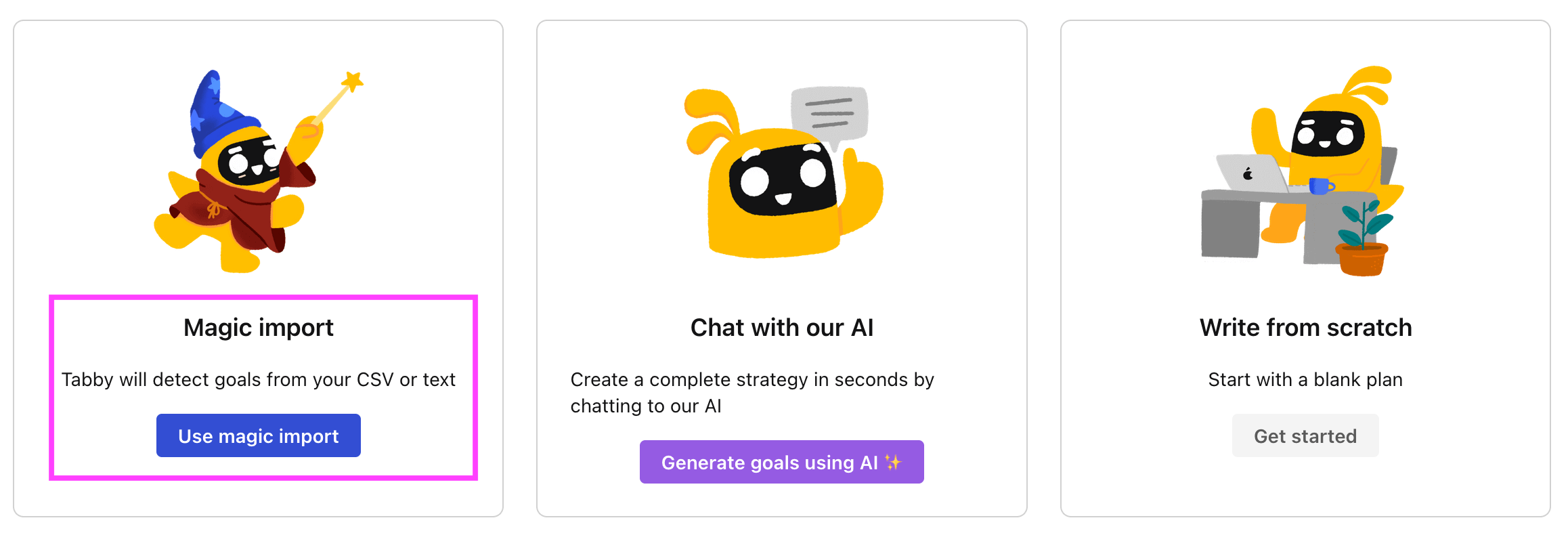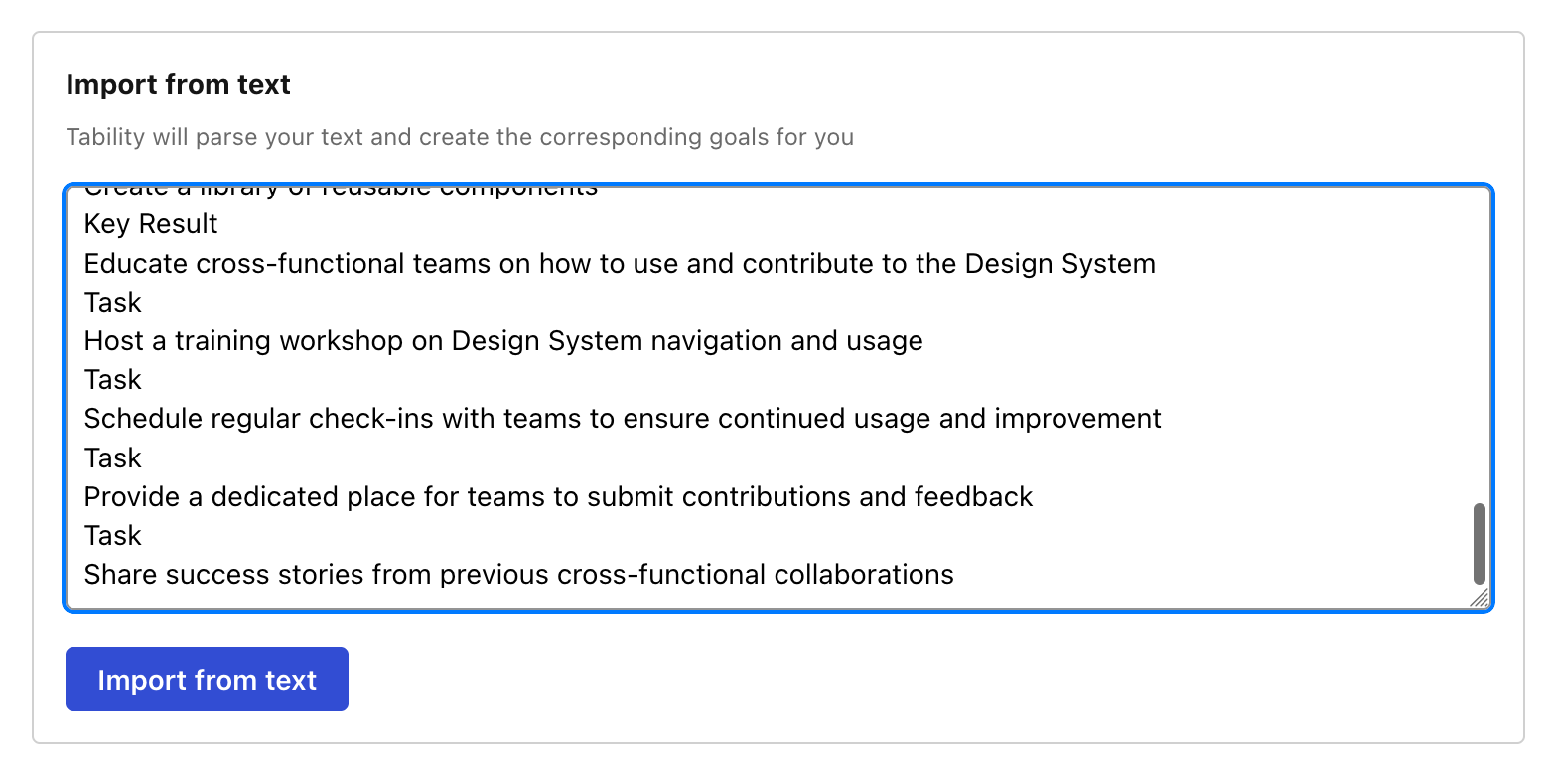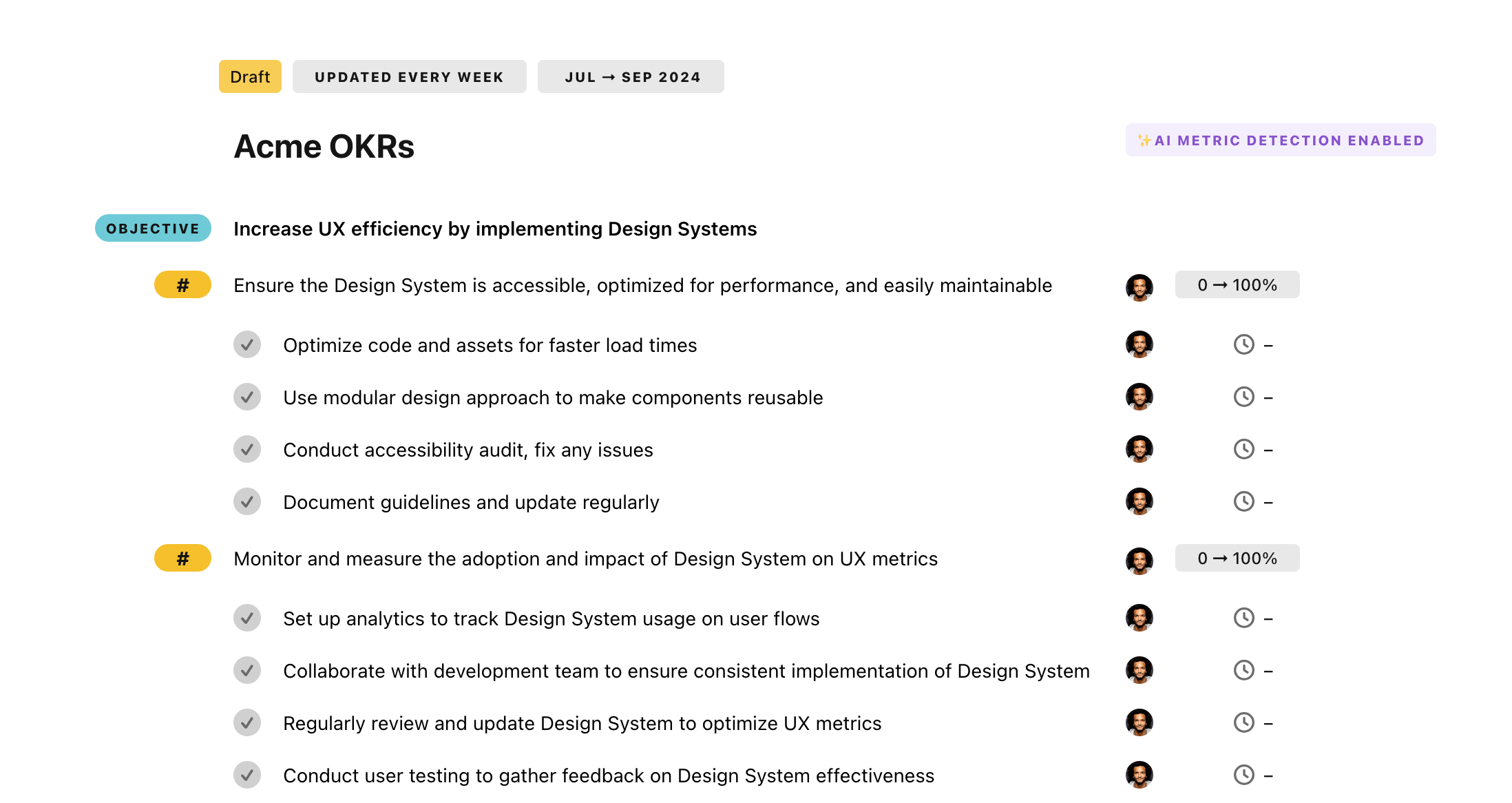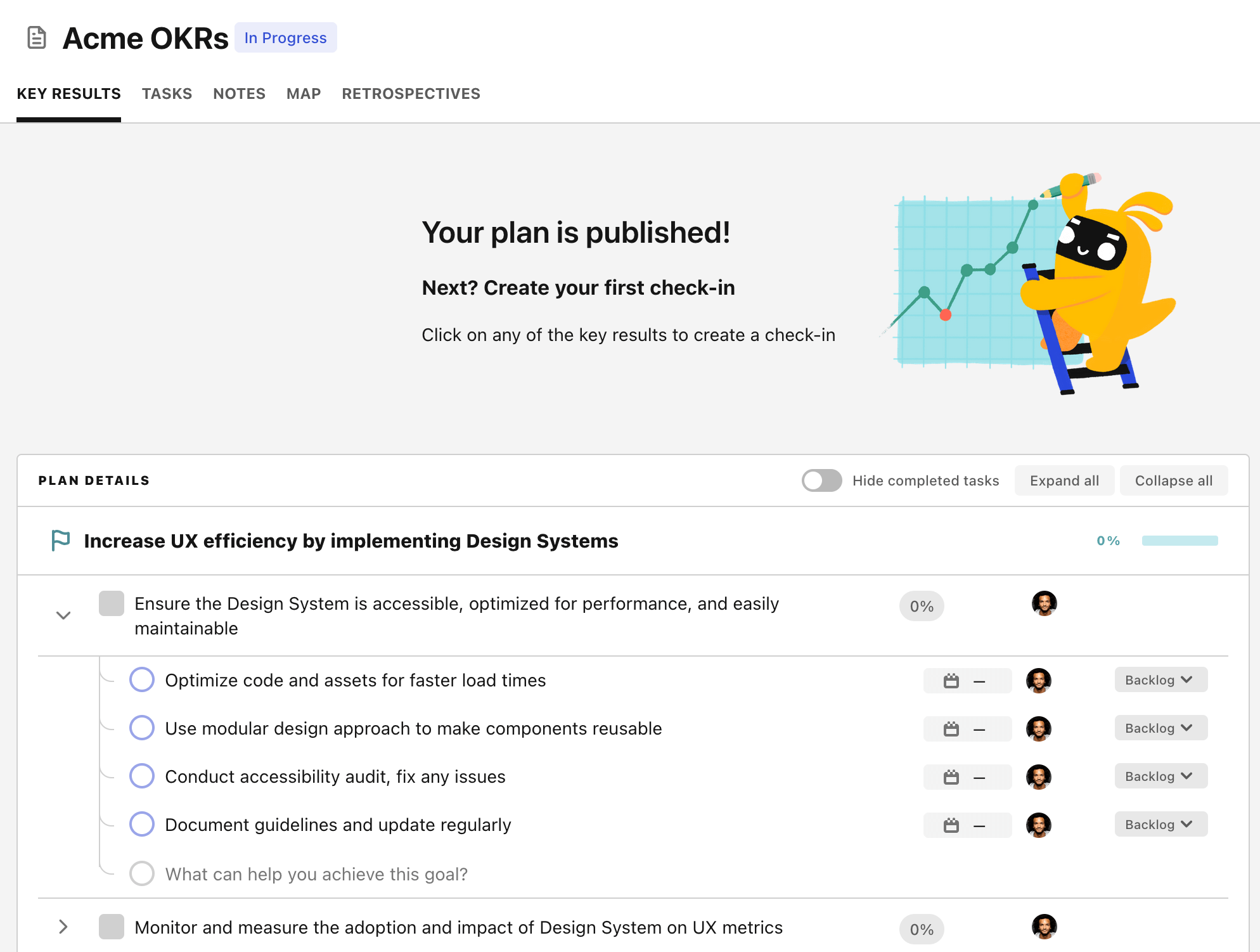OKR template to enhance customer engagement through app adoption
Your OKR template
The second objective primarily focuses on increasing app downloads by 30% via a focused social media advertising campaign, optimizing app store keywords, and launching an incentivized referral program. This approach aims to enhance the benefits and usefulness the app is providing, thereby attracting and encouraging more users to download it.
In the third objective, the focus shifts towards customer retention. The aim is to increase the customer retention rate to 40% inside the application. To achieve this, regular updates and improvements in the app features are planned, complemented by the development of user-oriented loyalty rewards programs and personalized notifications.
Overall, this OKR intends to drive customer engagement via app adoption by focusing on increasing daily active users, downloads, and creating a more compelling and personalised user experience that encourages customer retention.
ObjectiveEnhance customer engagement through app adoption
KRAchieve a 25% rise in active daily users
Launch interactive features to boost engagement
Improve user experience and onboarding
Implement targeted user acquisition campaigns
KRIncrease app downloads by 30%
Implement targeted social media advertising campaign
Optimize app store search keywords
Launch referral program with incentives
KRBoost customer retention rate to 40% within the app
Regularly update and improve app features
Develop a user-oriented loyalty rewards program
Implement personalized in-app notifications for users
How to edit and track OKRs with Tability
You'll probably want to edit the examples in this post, and Tability is the perfect tool for it.
Tability is an AI-powered platform that helps teams set better goals, monitor execution, and get help to achieve their objectives faster.
With Tability you can:
- Use AI to draft a complete set of OKRs in seconds
- Connect your OKRs and team goals to your project
- Automate reporting with integrations and built-in dashboard
Instead of having to copy the content of the OKR examples in a doc or spreadsheet, you can use Tability’s magic importer to start using any of the examples in this page.
The import process can be done in seconds, allowing you to edit OKRs directly in a platform that knows how to manage and track goals.
Step 1. Sign up for a free Tability account
Go tohttps://tability.app/signup and create your account (it's free!)
Step 2. Create a plan
Follow the steps after your onboarding to create your first plan, you should get to a page that looks like the picture below.

Step 3. Use the magic importer
Click on Use magic import to open up the Magic Import modal.
Now, go back to the OKR examples, and click on Copy on the example that you’d like to use.

Paste the content in the text import section. Don’t worry about the formatting, Tability’s AI will be able to parse it!

Now, just click on Import from text and let the magic happen.

Once your example is in the plan editor, you will be able to:
- Edit the objectives, key results, and tasks
- Click on the target 0 → 100% to set better target
- Use the tips and the AI to refine your goals
Step 4. Publish your plan
Once you’re done editing, you can publish your plan to switch to the goal-tracking mode.

From there you will have access to all the features that will help you and your team save hours with OKR reporting.
- 10+ built-in dashboards to visualise progress on your goals
- Weekly reminders, data connectors, and smart notifications
- 9 views to map OKRs to strategic projects
- Strategy map to align teams at scale